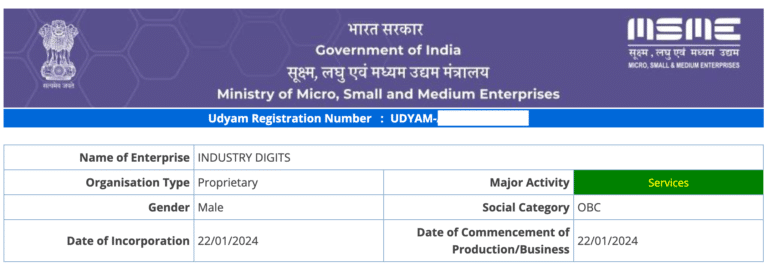In the dynamic and fiercely competitive sphere of digital marketing, businesses are racing not just to keep pace but to stay a step ahead. This requires a trifecta of strategic actions: thorough competitor analysis, meticulous site optimisation, and rigorous performance monitoring.
As rightly pointed out by Forbes, competitive analysis helps businesses establish benchmarks, identify and fill crucial gaps, and stay ahead of the trend. However, this only forms the foundation. The ultimate objective is to use the intelligence gathered to optimise your website content and outshine your competitors.
Competitor analysis, the first piece of the puzzle, involves systematically identifying and evaluating your competitor’s strengths and weaknesses, particularly in content strategy.
Studies reveal that businesses conducting regular competitor analysis were 2.6x times more likely to experience above-average revenue growth, demonstrating the potency of this practice. By understanding what your competitors are doing right and where they fall short, you can craft a more effective, audience-centric content strategy for your website.
"...businesses conducting regular competitor analysis were 2.6x times more likely to experience above-average revenue growth.."
However, top-notch content is only beneficial if presented on a user-friendly platform. Site optimisation, which includes improving your website’s speed and performance, plays a significant role here. Google reports that a one to ten-second increase in page load time can cause a 123% increase in visitor bounce rate. This underlines the critical importance of a smoothly functioning, fast-loading website that offers a superior user experience.
Lastly, the effectiveness of these endeavours must be tracked and evaluated through diligent performance monitoring. Improvements are only possible when there’s continuous monitoring and tweaking based on performance data.
This article aims to explore this integrated approach and offer insights on how businesses can leverage it to gain a competitive edge in the digital marketplace.
Understanding Competitor Analysis
What exactly is that!?
Competitor analysis is the process of identifying and evaluating your current and potential competitors in your industry. It helps you understand their products, services, prices, marketing strategies, strengths, weaknesses, opportunities, and threats. By conducting a competitor analysis, you can gain insights into your market position, customer preferences, industry trends, and best practices. You can also identify gaps in the market, differentiate your offerings, improve your performance, and create a unique value proposition for your target audience.
Tools for Competitor Analysis
There are several tools to identify key competitors in your industry, such as:
- Searching for keywords related to your product or service on search engines and social media platforms. You can use tools like Ubersuggest or Similarweb to find out who ranks high for those keywords and what kind of content they produce.
- Analysing customer reviews, ratings, feedback, and testimonials on online platforms like Amazon, Yelp, Trustpilot, etc. You can learn what customers like and dislike about your competitor’s products or services and how they compare to yours.
- Asking your existing or potential customers who they consider as your competitors and why. You can use surveys, interviews, focus groups, or online forums to gather this information.
- Studying industry reports, publications, blogs, podcasts, newsletters, etc., that cover your niche or market. You can find out who are the leading players, emerging trends, challenges, opportunities, and best practices in your industry.
Once you have identified your key competitors, you need to assess their strategies, strengths, and weaknesses (SWOT analysis). This framework helps you evaluate the internal and external factors that affect your competitors’ performance.
Also, like the SWOT, Porter’s five forces analysis is another popular framework to help you analyse the competitive forces that shape your industry. You can examine the level of rivalry among existing competitors, the threat of new entrants, the bargaining power of suppliers and buyers, and the threat of substitute products or services.
Benchmarking & Performance Metrics
Performance monitoring and assessment are vital steps after competitor analysis. They help you quantify marketing achievements, measure the impact of your digital marketing strategies and compare them with your competitors and industry standards. Here are some ways to carry out performance monitoring and assessment after competitor analysis:
-
Define your key performance indicators (KPIs) based on your marketing goals and objectives:
KPIs are quantifiable values that show how well you are achieving your targets. For example, if your goal is to increase website traffic, your KPIs could be the number of visitors, sessions, page views, bounce rate, etc. Similarly, you can use metrics like market share, revenue growth, customer satisfaction, conversion rate, retention rate, etc., to measure how well your competitors are doing and where you stand. -
Choose the right tools to track and analyse your KPIs:
Many digital marketing tools can help you monitor and assess your performance across different channels and platforms. For example, you can use Ubersuggest to track your SEO and web traffic, Google Analytics to measure your website performance, HubSpot to manage your leads and conversions, etc. -
Benchmark your performance against your competitors and industry standards:
Benchmarking is a method of comparing your performance with others in your niche or market. It helps you identify your strengths and weaknesses, as well as the best practices and trends in your industry. You can use tools like Similarweb or Klipfolio to benchmark your KPIs against your competitors or industry averages. -
Review and optimise your performance regularly:
Check your KPIs regularly and see if they are aligned with your goals and objectives. You should also analyse the data and insights from your tools and see what is working and what is not working in your digital marketing efforts. Based on the results, you should make adjustments and improvements to optimise your performance and achieve better outcomes.
Competitor analysis is not a one-time activity but an ongoing process that requires regular monitoring and updating. Market conditions, customer preferences, industry trends, and competitor actions can change rapidly and affect your competitive advantage.
Therefore, it is important to continuously review industry leaders and use these insights to strategise your content. By doing so, you can:
- Stay ahead of the curve and anticipate changes in the market.
- Adapt to customer needs and expectations and deliver value.
- Improve your content quality and relevance and attract more traffic.
- Enhance your content differentiation and positioning and stand out from the crowd.
- Optimise your content performance and conversion and achieve your goals.
How can you optimise your Marketing Strategy with “Business Scribes”?
Our end-to-end content marketing services for our client include competitor analysis, creating a productive marketing strategy, and being ahead of the competition. We do this in four steps:
-
Conduct a competitive content analysis:
We first analyse your competitors’ content strategies in a structured way to uncover their top-performing content and weak spots and identify your competitive advantages -
Benchmarking your Marketing efforts:
By understanding how your content marketing efforts compare to others in the industry, we help you see the type of content your target audience expects from them and how they prefer to engage with it. -
Identify content gaps:
We then help you identify competitors’ top-performing and low-performing content, understand what their target audience likes, and what content approaches don’t get a lot of traction (so you can avoid them). -
Keep your content fresh:
By finding fresh ideas to put a creative spin on, we make sure your content is effective in reaching your marketing goals and standing out from the crowd.
To conclude, by conducting a competitive content analysis, benchmarking your digital marketing efforts, identifying content gaps, and keeping their content fresh, Business Scribes helps you stay a step ahead of their competition and ensure that any content they create is unique and valuable for their target audience.









